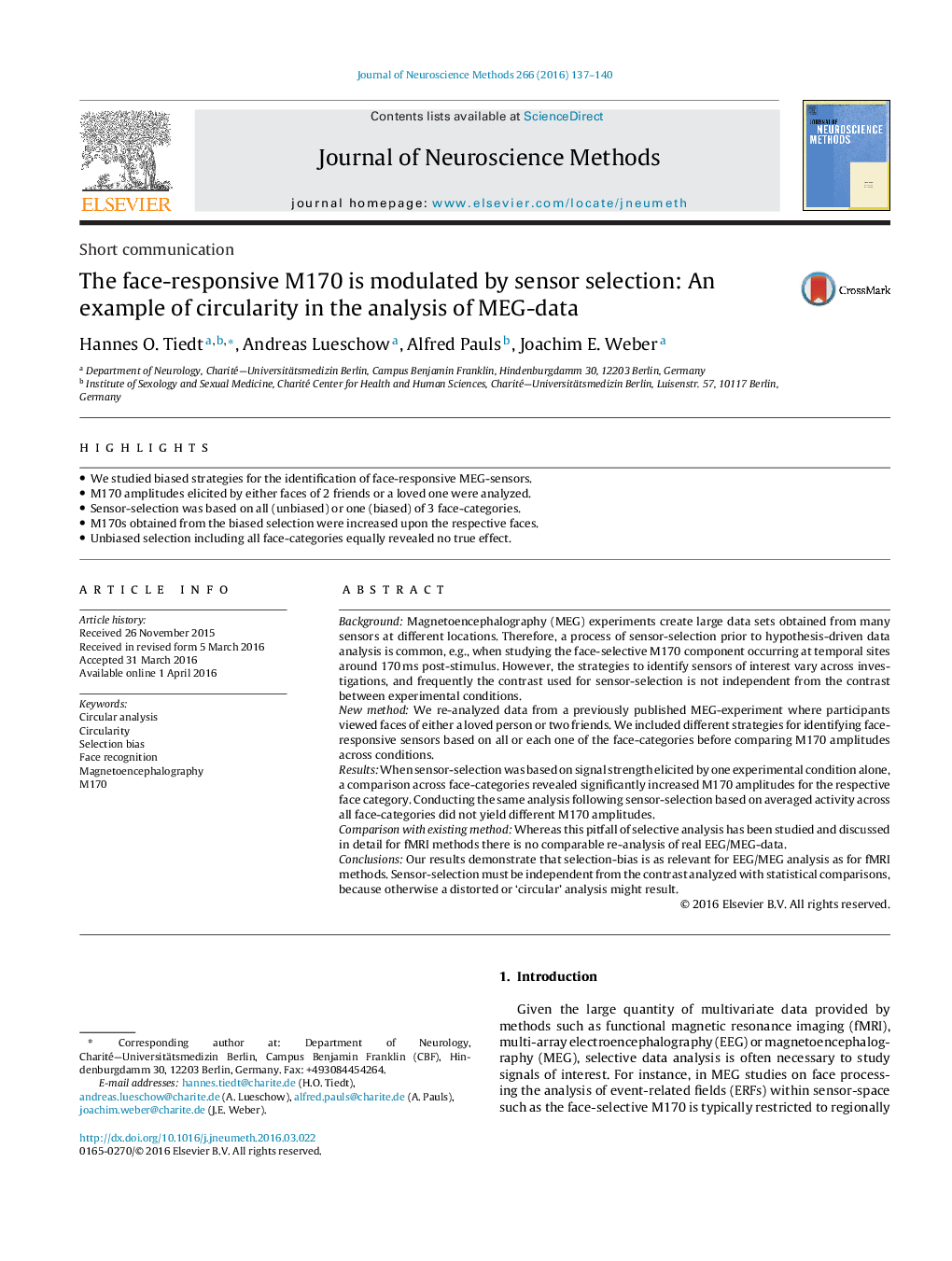| Article ID | Journal | Published Year | Pages | File Type |
|---|---|---|---|---|
| 6267727 | Journal of Neuroscience Methods | 2016 | 4 Pages |
â¢We studied biased strategies for the identification of face-responsive MEG-sensors.â¢M170 amplitudes elicited by either faces of 2 friends or a loved one were analyzed.â¢Sensor-selection was based on all (unbiased) or one (biased) of 3 face-categories.â¢M170s obtained from the biased selection were increased upon the respective faces.â¢Unbiased selection including all face-categories equally revealed no true effect.
BackgroundMagnetoencephalography (MEG) experiments create large data sets obtained from many sensors at different locations. Therefore, a process of sensor-selection prior to hypothesis-driven data analysis is common, e.g., when studying the face-selective M170 component occurring at temporal sites around 170Â ms post-stimulus. However, the strategies to identify sensors of interest vary across investigations, and frequently the contrast used for sensor-selection is not independent from the contrast between experimental conditions.New methodWe re-analyzed data from a previously published MEG-experiment where participants viewed faces of either a loved person or two friends. We included different strategies for identifying face-responsive sensors based on all or each one of the face-categories before comparing M170 amplitudes across conditions.ResultsWhen sensor-selection was based on signal strength elicited by one experimental condition alone, a comparison across face-categories revealed significantly increased M170 amplitudes for the respective face category. Conducting the same analysis following sensor-selection based on averaged activity across all face-categories did not yield different M170 amplitudes.Comparison with existing methodWhereas this pitfall of selective analysis has been studied and discussed in detail for fMRI methods there is no comparable re-analysis of real EEG/MEG-data.ConclusionsOur results demonstrate that selection-bias is as relevant for EEG/MEG analysis as for fMRI methods. Sensor-selection must be independent from the contrast analyzed with statistical comparisons, because otherwise a distorted or 'circular' analysis might result.
